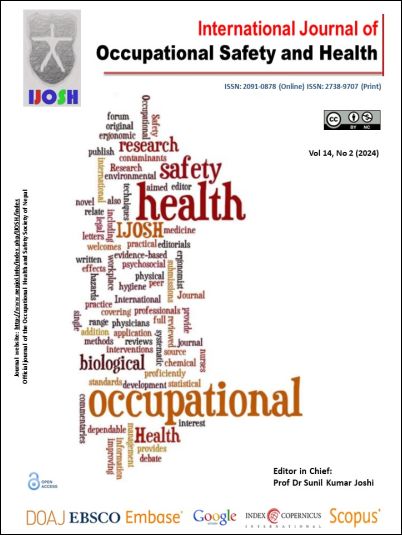Riding to the Rescue: A Comprehensive Review of Health and Safety Measures in Ambulance Cars
DOI:
https://doi.org/10.3126/ijosh.v14i2.55311Keywords:
control measures, emergency medical service, hazards, occupational health and safety, risk factorsAbstract
Paramedics are registered health professionals in numerous countries. Whilst ambulance services must prioritize their patients, they also require personnel to be healthy to perform at their utmost to provide optimal patient care. Ambulance transport is associated with predictable and likely preventable occupant hazards. Ambulance services provide care 24 hours a day, 7 days a week, and shift work is known to be a risk factor for poor health. Working unsociable hours has detrimental consequences on the health and well-being of healthcare workers and can ultimately result in compromised patient care. Ambulance service utilization rates are high, with paramedics working in unpredictable environments, and undertaking complex clinical and manual handling tasks whilst caring for critically unwell patients; thus, there are several reasons postulated for poor health in this professional group. These include injuries, serious infections, high rates of musculoskeletal diseases, stress, and mental health problems. This review article aims to identify the occupational risks in an ambulance service, assess their impact on the health of employees, and explore control measures that can be implemented to reduce the risks and improve the safety of healthcare workers and patients.
Downloads
Downloads
Published
How to Cite
Issue
Section
License
Copyright (c) 2024 The Author(s)

This work is licensed under a Creative Commons Attribution-NonCommercial 4.0 International License.
This license enables reusers to distribute, remix, adapt, and build upon the material in any medium or format for noncommercial purposes only, and only so long as attribution is given to the creator.





